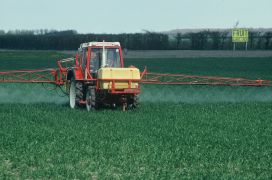Network
CAPRI builds on an open network approach. The activities are managed by Wolfgang Britz at the Institute for Food and Resource Economics, University of Bonn. There is no formal consortium, but institutions belonging to the network have aggreed on a distribution of tasks to maintain and update the system. Many researches have over the years contributed to CAPRI, as can be seen from the publications. This page lists only some of the network members currently working regularly with the system. Researchers and institutions are welcome to join the network.
The CAPRI network is also linked to the SEAMLESS association and the FP VII Network of excellence LIAISE (Linking Impact Assessment Instruments to Sustainability Expertise), as well as to the teams involved in the projects applying and developping CAPRI. CAPRI is also part of the "Integrated Modelling Platform" at JRC-IPTS, AGRILIFE unit.
The current team in Bonn
Network contact members at other institutions
Maria Blanco, UPM, Madrid, Spain
Alexander Gocht, VTI, Braunschweig, Germany
Torbjoern Jansson, SLU, Upsala, Sweden
Maja Kozar, University of Ljubljana, Slovenia, Biotechnical faculty, Chair for Agricultural Economics, Policy and Law (UL)
Adrian Leip, JRC-IES, Climate Change Unit, Ispra, Italy
Klaus Mittenzwei, Nilf, Oslo, Norway
Ignacio Perez, OECD, Paris, France
Jean-Michel Terres, JRC-IES, Ispra, Italy
Benjamin Van Doorslaer, JRC-IPTS, Agrilife Unit, Sevilla, Spain
Note: The list is not exhaustive.
Working as a distributed team
Technically, a SVN-Server hosted by ILR allows the team members to work efficiently in a distributed network. The GAMS code of CAPRI, the JAVA code of its Graphical User Interface, but also the data base and statistical raw data are under version control. That allows controling changes to the different components, and an incremental improvement of the system. It also ensures that code changes of network members are not lost, and that local installations are synchronised with the core version. The team communicates mostly via the CAPRI mailing list. Training sessions allow newcomers to join the network, and existing member to update their knowledge about the system.
Open source, learning and maintenance cost
CAPRI is handled as open source. However, it is well known that license costs are often only a small part of the total costs of ownership of a software package. Due to its richness in detail, the code base of CAPRI is rather large, and it requires a serious effort to learn using the system. The documentation, the user hand-book for the GUI, the web-page and different types of publications, training sessions, slide collections and technical tools support the learning process. Nevertheless, the market entrance costs are considerable, and newcomers may require a few months before they are familiar enough with the system to generate and analyze results on their own.
Part of higher learning costs compared e.g. to a farm type model or a stand-alone Multi-Commodity Model are also due to combination of the supply and market modules with their own methodologies as well as the high resolution space, products/activities and policy instruments. Compared to CGE, the simultaneous accounting in physical as well as monetary units and bio-physical relations/indicators add complexity. But it is the richness in detail and the unique combination of a spatial global market model with regional/farm type programming models for Europe which explain the comparative advantage of CAPRI.
It is in part a deliberate decision to refrain from a "push the button" approach to model usage which may trigger naive applications and signal simplicity where it does not exist. The learning time is usually well invested for the newcomer and the CAPRI network: it ensures a minimum commitment of newcomers and a certain quality of the results, as content and concept of components and their linkages must be understood before any serious application. And it also helps to keep the network at a manageable size.
Last Updated:Tuesday, October 12, 2010


